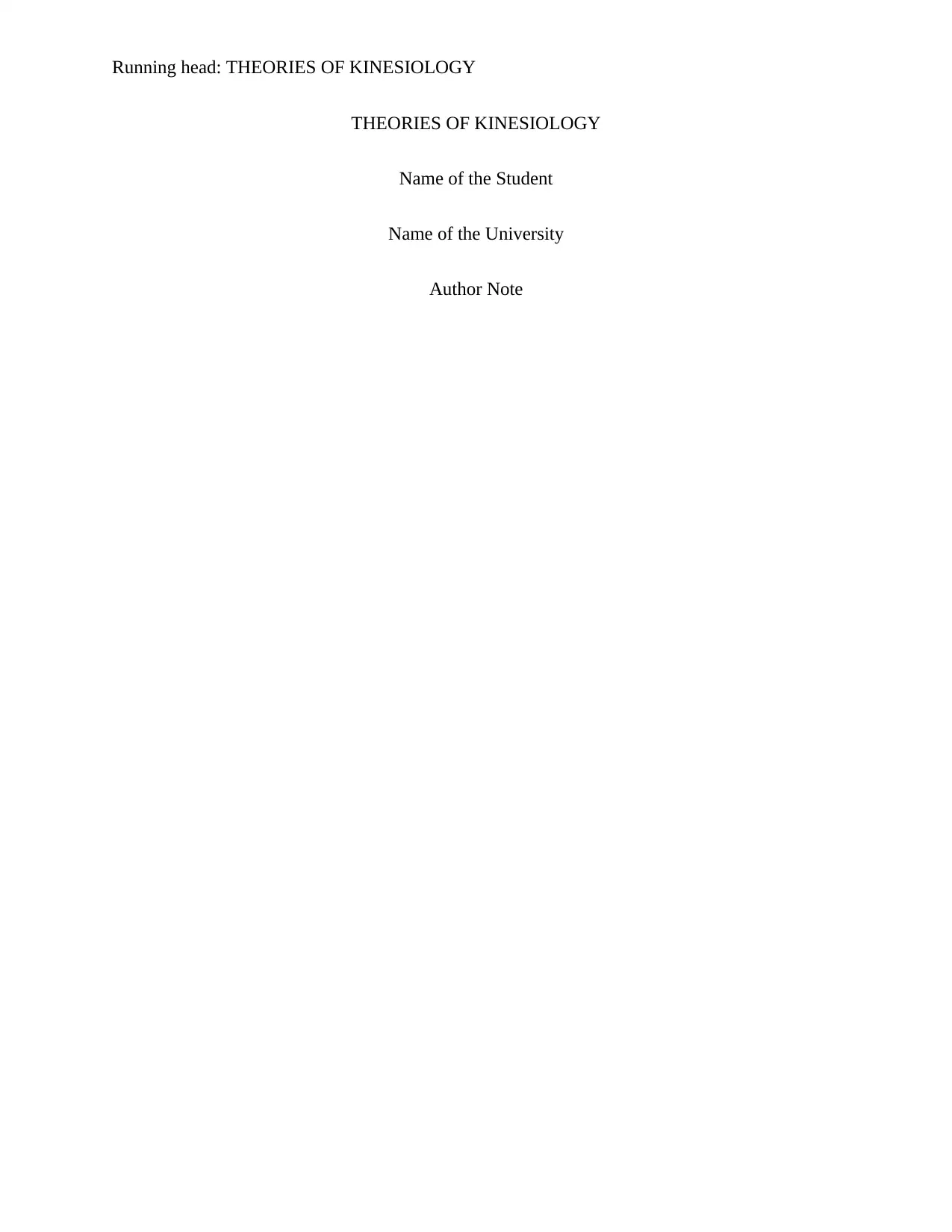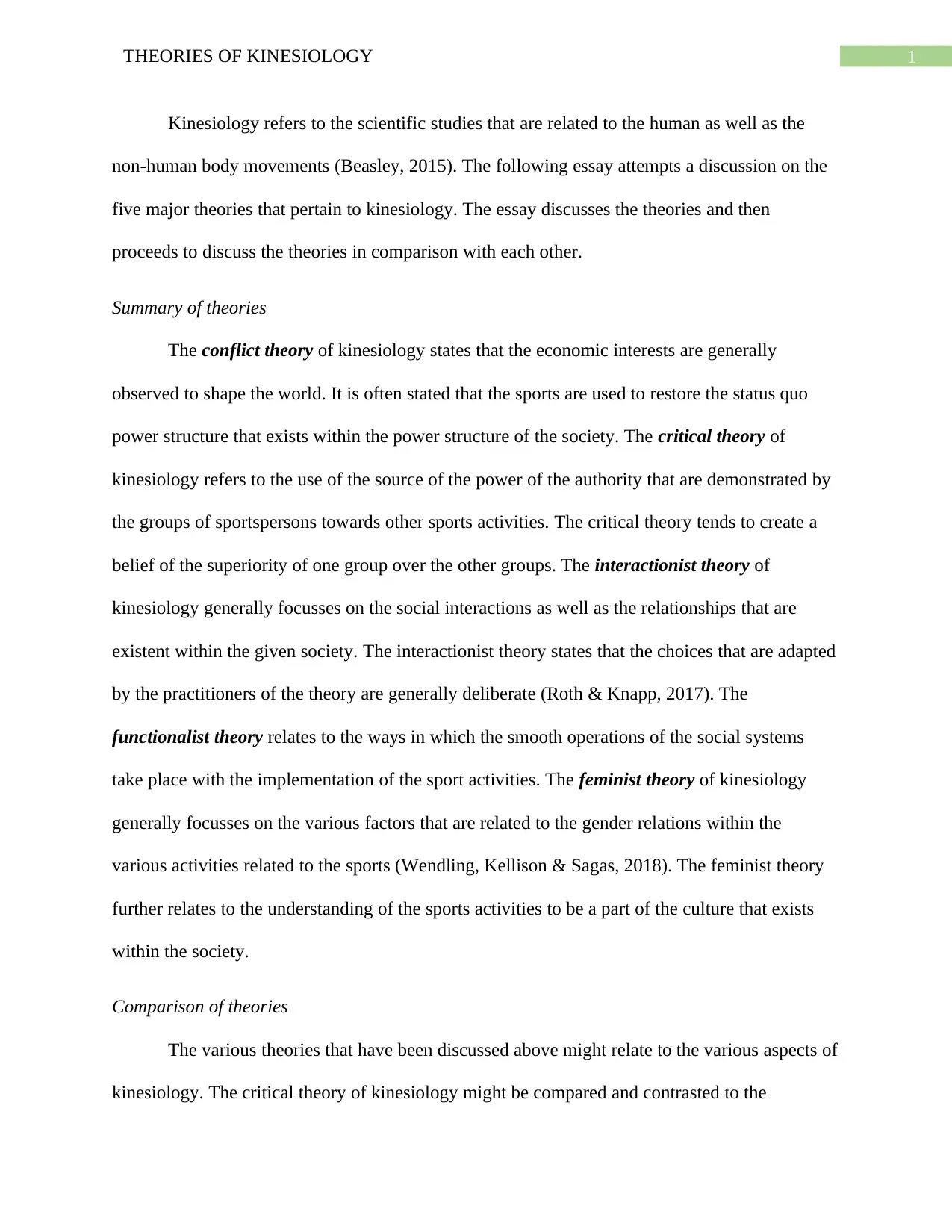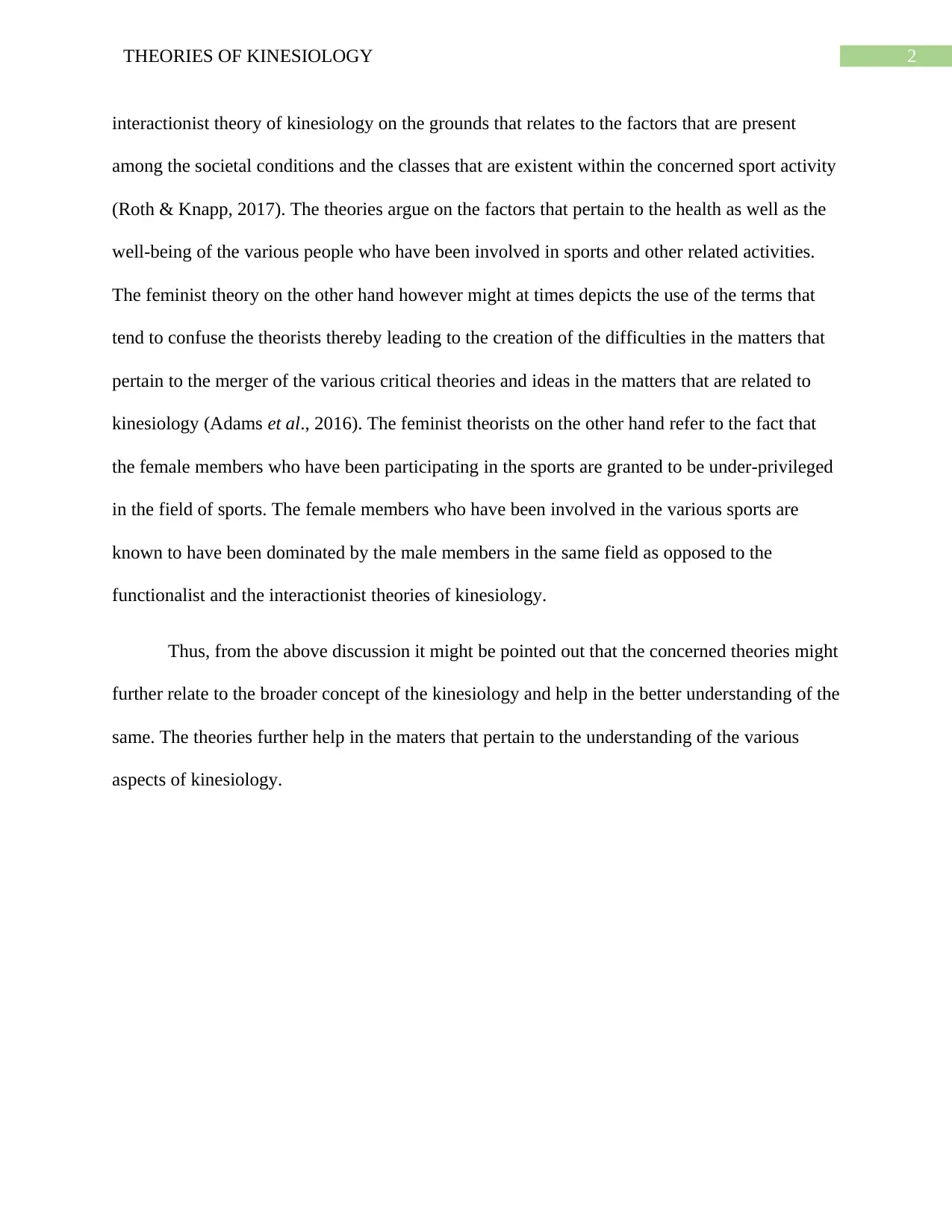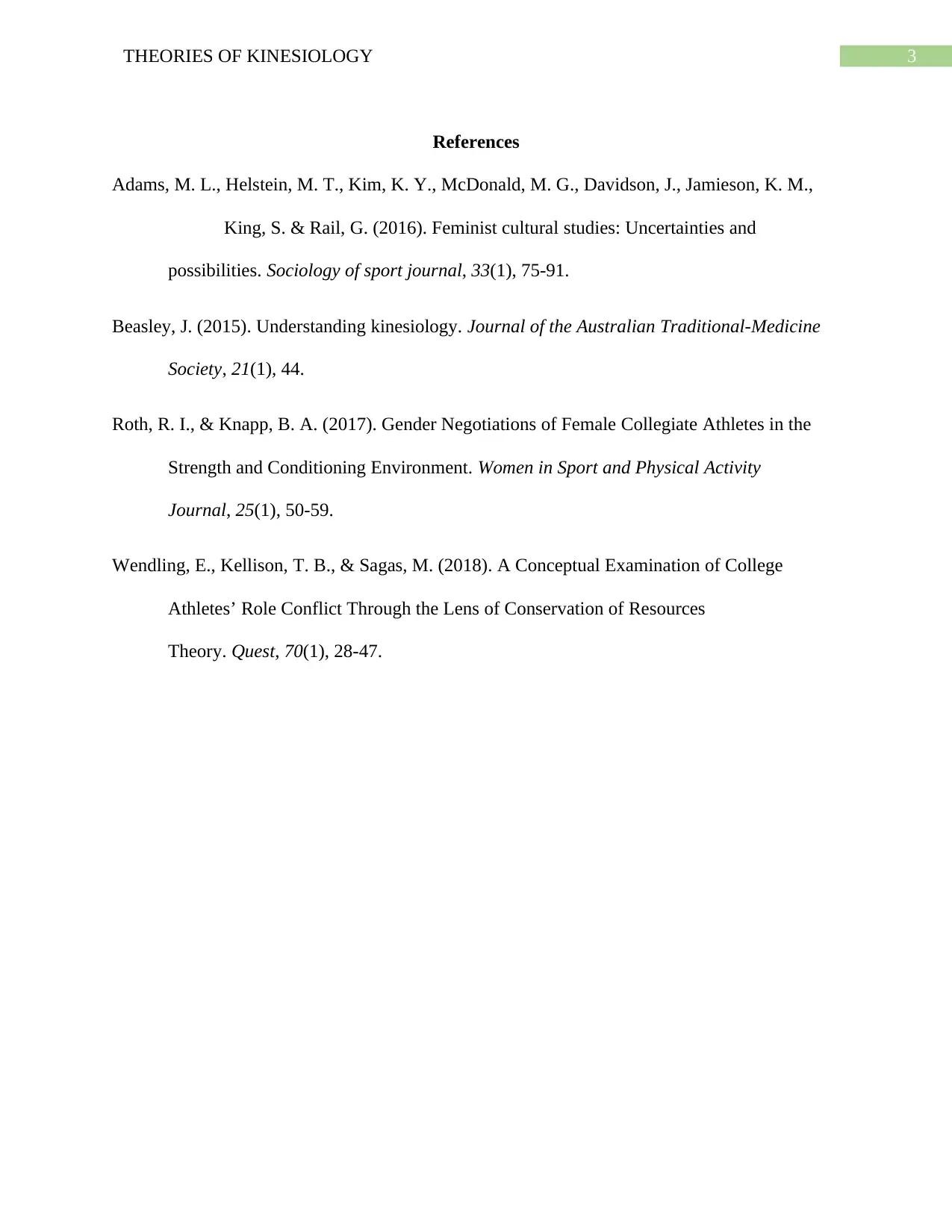Comparative Analysis of Five Major Theories in Kinesiology: Insights
VerifiedAdded on 2023/06/10
|4
|786
|119
Essay
AI Summary
This essay provides a comprehensive overview of five major theories in kinesiology: conflict, critical, interactionist, functionalist, and feminist theories. It begins by defining kinesiology as the scientific study of human and non-human body movements. Each theory is then individually summarized, highlighting its core tenets and applications within the field. The conflict theory emphasizes economic interests, while the critical theory focuses on power dynamics in sports. The interactionist theory examines social interactions, the functionalist theory considers the smooth operation of social systems, and the feminist theory explores gender relations in sports. The essay then proceeds to compare and contrast these theories, particularly focusing on the relationships between critical, interactionist, and feminist perspectives. The comparison highlights how these theories contribute to a broader understanding of kinesiology and the various aspects of sports and human movement. The essay concludes by emphasizing the importance of these theories in understanding the complexities of kinesiology.
1 out of 4











![[object Object]](/_next/static/media/star-bottom.7253800d.svg)